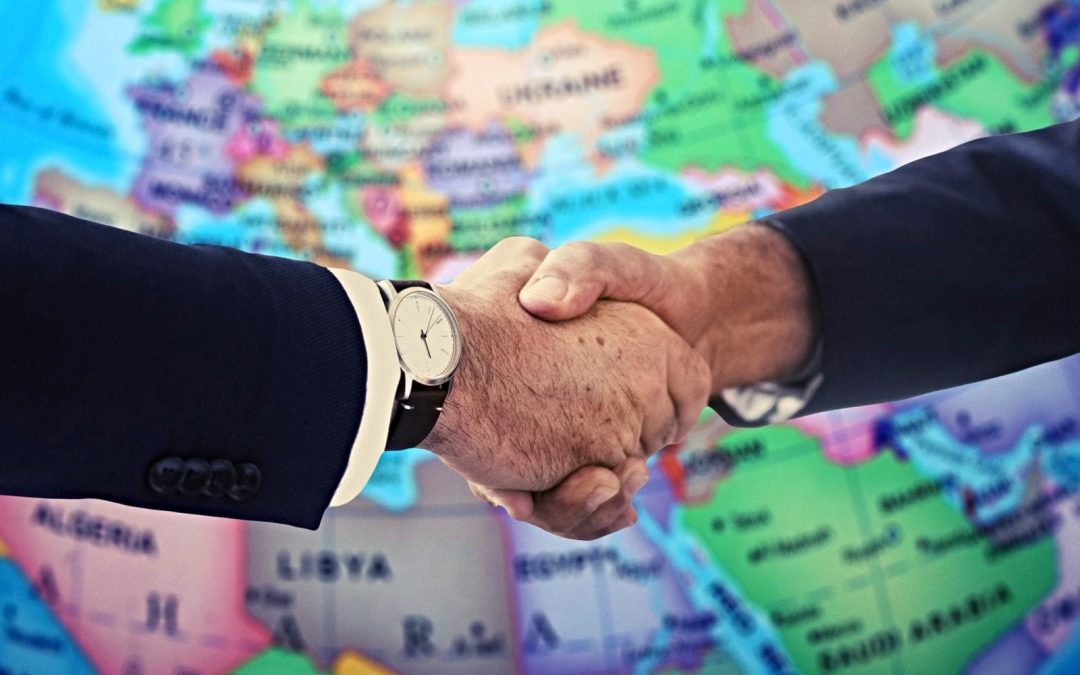Among the many lasting contributions of my teacher and friend, Glen Stassen, his approach to just peacemaking may be the most important.
Just peacemaking was Glen’s name for effective practices in civil and international life that reduce and resolve conflicts without violence.
On his own and with others, Glen worked to name these practices, show how they work in the real world, offer examples and advocate for their implementation where needed.
What follows is my brief rendering of Stassen’s final list of 10 just peacemaking practices, with examples that he liked to cite.
- Support nonviolent direct action.
Nonviolent direct action occurs when citizens confront injustice through peaceful public protests and other resistance strategies, including boycotts and strategic noncooperation.
Effective nonviolent direct-action campaigns often force recalcitrant governments (and sometimes other powers, like corporations) to enter into dialogue with those victimized by injustice and eventually to change unjust policies.
They do so without a resort to force that might tempt the state to gun down dissenters.
Nonviolent direct action as practiced effectively by Mohandas Gandhi in India and Martin Luther King Jr. in the United States has spread around the world.
Practitioners helped end dictatorships in the Philippines, bring about nonviolent anti-Communist revolutions in Poland, East Germany and Central Europe, and spur democratic change in Latin America, South Africa and many other regions.
- Take independent initiatives to reduce threat.
Independent initiatives are unilateral measures taken by one side of a conflict situation, designed to decrease the threat and distrust that undermine support for negotiated solutions.
They (1) are visible and verifiable actions, not mere promises; (2) are accompanied by an announcement that their purpose is to decrease threat and distrust and to invite reciprocation; (3) do not leave the initiator weak but strong because the initiator is perceived by onlookers as holding the moral and strategic high ground; (4) do not wait for the slow process of negotiations; (5) have a timing announced in advance that is carried out regardless of the other side’s bluster or response; (6) come in a series: if the other side fails to reciprocate, small initiatives continue in order to keep inviting reciprocation.
For example, the strategy of independent initiatives freed Austria from Soviet domination in the 1950s; produced the Atmospheric Test Ban Treaty of 1963 after Presidents Eisenhower and Kennedy halted atmospheric testing unilaterally; achieved dramatic reductions in nuclear weapons via the series of initiatives by Soviet President Gorbachev and the U.S. Congress, and then President George H. W. Bush; and led to breakthroughs by adversaries in Northern Ireland, eventually leading to the end of decades of guerrilla war there.
- Use cooperative conflict resolution.
The idea of cooperative conflict resolution is that the sides together cooperate to resolve a conflict in a manner at least reasonably satisfactory to the parties involved.
The realism is that if either party is unsatisfied, then both parties suffer because the conflict will fester.
Cooperative conflict resolution trains adversaries to see each other as human beings with dignity and legitimate needs rather than as sub-humans whose every negotiating demand is illegitimate just because of how evil they are.
The goal is to find win-win solutions and to end the scorched-earth tactics so often characteristic of those in heated conflict with each other.
A key test of the seriousness of peoples’ claims to be seeking peace is whether they initiate negotiations or refuse them, and whether they develop imaginative solutions that show they understand their adversary’s humanity, perspectives and legitimate needs.
Stassen saw cooperative conflict resolution in President Jimmy Carter’s achieving a lasting peace in the Camp David accords between Egypt and Israel (1979).
It has borne good fruit in numerous other disputes both domestic and international.
Notice, for example, the routine use of cooperative conflict resolution in legal settings, such as in resolving domestic and marital disputes.
- Acknowledge responsibility for conflict and injustice; seek repentance and forgiveness.
This practice seeks to end fruitless finger-pointing in situations of conflict by initiating honest acknowledgment of one’s own side’s responsibility for what has gone wrong.
Certainly, Dietrich Bonhoeffer did this in Nazi Germany in some of his late writings; though he was murdered by the regime, he helped inspire surviving leaders and churches to eventually confess the sin of support for or complicity with Hitler.
Since then, many governments have lanced the boil of festering historical injustices by acknowledging responsibility, and directly asking forgiveness, of an adversary or former adversary for prior wrongs done. It can be an immensely powerful and transformative practice.
- Promote democracy, human rights and religious liberty.
Spreading human rights, religious liberty and democracy contributes to building peace.
People whose rights are respected, whose freedoms are protected and who have a voice in self-government do not need to rebel using force; this applies both across nations and within them.
Work by churches and human rights groups to press for human rights has helped convert authoritarian and dictatorial regimes in Latin America to democracies or democracies-in-process, and the trend continues elsewhere.
Spreading peace is done by networks of persons advancing human rights and creating the conditions for a sustainable just peace.
- Foster just and sustainable economic development.
Hungry people easily become desperate and violent, and, when they rebel, their need is at least temporarily exacerbated.
A just peace requires at least relatively equitable global and domestic economies in which extreme inequalities in wealth, power and participation are progressively overcome.
- Work with emerging cooperative forces in the international system.
Networks of international communication, travel and migration, church missions and business are stitching nations together into an international society in which former or potential enemies are brought into continuous constructive interaction.
It stands to reason that the more nations are involved in these webs of interaction, the less likely they are to make war.
This is partly because there is too much to lose for all involved, and partly because there is a web of human connections that create loyalties transcending state boundaries.
- Strengthen the United Nations and international organizations.
Acting alone, states cannot solve most of their economic, environmental and security problems. The problems are international.
Therefore, the practice of supporting cooperative action via the United Nations and all relevant global and regional organizations is crucial.
These organizations, at their best, resolve conflicts, monitor and enforce truces and replace violent conflict with the beginnings of cooperation.
They also reinforce international legal norms and reduce the role of raw power in international relations.
- Reduce offensive weapons and weapons trade.
Nations and peoples that can hardly afford to feed themselves never seem to be short of highly destructive weaponry.
The weapons trade is a multibillion-dollar industry awash in blood, as Pope Francis reminded Americans during his 2015 visit.
Even so-called “conventional” weapons have become so destructive that war is usually horrific and, in the end, not worth the price.
The issue of offensive versus defensive weapons became especially important during the nuclear weapons buildup of the Cold War.
Strategists often debated which of various types of weapons would be classified as offensive versus defensive.
One goal was to create disincentives for the major nations to load up on offensive weapons and thus be tempted to wipe out the other side with a surprise nuclear strike.
Reducing offensive weapons and shifting toward defensive force structures strengthened security in this regard.
As nations turn toward democracy and human rights, their governments no longer need large militaries to keep them in power.
They can reduce military spending and devote their economies to meeting basic human needs.
- Encourage grassroots peacemaking groups and voluntary associations.
Everybody needs somebody looking over their shoulders to keep them in check.
In the political and international arenas, governments need citizen groups to do this for them, and these groups themselves need training in just peacemaking and its practices.
The impressive array of nongovernmental organizations working on human rights, civil society and peacemaking around the world exists precisely to help both governments and their citizens create a more just and peaceful world.
A transnational network of groups can transcend captivity to narrow national or ideological perspectives.
They can help to initiate, foster and support transforming initiatives that take risks to break out of cycles that perpetuate violence and injustice.
Just peacemaking is a critically important contribution to thinking about war and peace.
No presentation of ethics on this subject is adequate without consideration of just peacemaking.
Its strategies will not always work in our violent world, but they must be attempted.
Just peacemaking broadens the Christian moral conversation about war beyond the old pacifism versus just war debate. It is a remarkably practical and helpful approach, and it has saved lives.
Editor’s note: This article is part of an EthicsDaily.com series this week focused on peacemaking. The previous article in the series is:
Balancing Idealism and Realism as We Seek Peace on Earth | Richard Wilson
Distinguished University Professor of Christian Ethics at Mercer University, Chair in Christian Social Ethics at Vrije Universiteit, and Senior Research Fellow at International Baptist Theological Study Centre. He is the author, co-author, editor or co-editor of 25 books and approximately 175 book chapters, journal articles and reviews.


